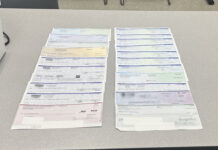
The Georgia Department of Public Health’s Office of EMS and Trauma has officially designated Stephens County Hospital as a Remote Treatment Stroke Center, recognizing the hospital’s exceptional care for stroke patients in Stephens County and surrounding areas. The hospital is located at 163 Hospital Drive, Toccoa, GA.
Time is crucial
“Time is critical when it comes to diagnosing and treating a stroke. Patients showing signs of a stroke need emergency care within 3 ½ to 4 hours of symptom onset,” explained Brody Reid, Stroke Medical Director and Emergency Department Medical Director. “At Stephens County Hospital, we provide that care, which may prevent the need for patients to be transported to a facility outside the community.”
To earn this designation, Stephens County Hospital demonstrated adherence to evidence-based practices in stroke care and provided data on the timeliness of treatment, improvement efforts, and policies in place to care for stroke patients.
Following a thorough review, the Georgia Department of Public Health’s Office of EMS and Trauma recognized Stephens County Hospital as an essential part of the state’s expanding and comprehensive stroke care network.
When stroke occurs
Stroke occurs when blood flow to the brain is blocked, either by a clot (ischemic stroke) or a ruptured blood vessel (hemorrhagic stroke). A Transient Ischemic Attack (TIA), or “mini stroke,” is caused by a temporary clot.
As the fifth leading cause of death and the leading cause of disability in the U.S., early detection and treatment of stroke are vital to improving survival rates, reducing disability, and speeding up recovery.
“When a patient presents with stroke-like symptoms in the emergency department, every department understands that time is of the essence. We work quickly to administer thrombolytic drugs, which can dissolve blood clots and improve patient outcomes,” said Van Loskoski, Chief Executive Officer. “Collaboration across emergency services, radiology, laboratory, and registration ensures a swift diagnosis and appropriate treatment for the patient.”
“We take pride in delivering high-quality care close to home, giving our stroke patients the best opportunity for survival and minimal disability. We are also committed to educating our community to reduce stroke risks and improve overall health,” said Sherry Loggins, Emergency Department Director.
BEFAST
Community members should familiarize themselves with the BEFAST acronym to recognize stroke symptoms and seek immediate help:
Balance – Sudden loss of balance
Eyes – Vision loss
Face drooping – One side of the face droops or feels numb. Ask the person to smile—does the smile appear uneven?
Arm weakness – One arm may be weak or numb. Ask the person to raise both arms—does one arm drift downward?
Speech difficulty – Slurred speech or difficulty speaking. Ask the person to repeat a simple sentence, like “The sky is blue.” Is it repeated correctly?
Time to call 9-1-1: If someone shows any of these symptoms—even if the symptoms go away—call 9-1-1 and get them to the hospital immediate






